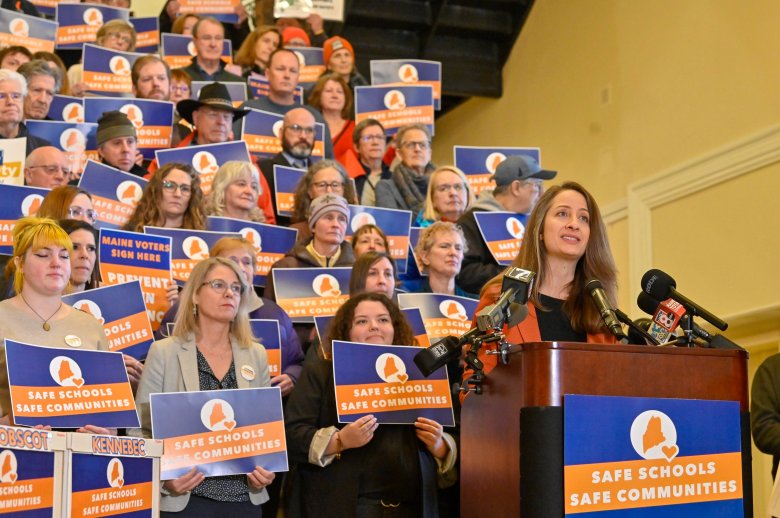Americas: Regional Conference on Women must act as a safeguard against attacks on gender equality – Amnesty International

XVI Regional Conference on Women: A Critical Juncture for Sustainable Development Goals
The XVI Regional Conference on Women in Latin America and the Caribbean, the primary United Nations forum on gender in the region, is scheduled to be held in Tlatelolco, Mexico City, from 12 to 15 August 2025. This meeting occurs 30 years after the adoption of the Beijing Platform for Action and at a critical time for advancing the Sustainable Development Goals (SDGs), particularly amid significant challenges to gender equality and a hostile environment for women’s rights in the region.
According to Astrid Valencia, research director for the Americas at Amnesty International, the conference represents a crucial moment to strengthen state commitments to the rights of women, girls, and LGBTIQ+ people through firm agreements and urgent actions.
Assessing Progress on SDG 5: Gender Equality
The conference will evaluate the implementation of the 2022 Buenos Aires Commitment, which is fundamental to achieving several targets under SDG 5 (Gender Equality).
The Burden of Unpaid Care Work (SDG Target 5.4)
A central issue is the unequal distribution of care work, a direct barrier to women’s economic empowerment and overall equality. The 2022 Buenos Aires Commitment recognized the right to care and the need for social and gender co-responsibility, aligning with SDG Target 5.4, which calls for recognizing and valuing unpaid care and domestic work.
- Disproportionate Burden: On average, women in the region dedicate 38 hours per week to unpaid care work, compared to only 16 hours for men.
- Economic Impact: This inequality limits women’s autonomy, confines them to precarious employment, and obstructs their access to labour rights and social protection, undermining progress on SDG 8 (Decent Work and Economic Growth).
- Policy Gaps: Progress in establishing public care policies has been slow. Existing systems, such as those in Uruguay and Chile, require sustainable investment, fiscal justice, and robust accountability mechanisms. There is a critical need to recognize and finance community and territorial care work, especially for Indigenous, Afro-descendant, and migrant women.
Eradicating Violence Against Women and Girls (SDG Target 5.2)
Achieving gender equality is impossible without eliminating all forms of violence. The region faces alarming rates of gender-based violence, a direct contravention of SDG Target 5.2 and SDG 16 (Peace, Justice and Strong Institutions).
- Femicide: The Economic Commission for Latin America and the Caribbean (ECLAC) reported that at least 3,897 women were victims of femicide in the region in 2023.
- Enforced Disappearances: Women are predominantly responsible for searching for disappeared persons and demanding justice, often facing indifference from authorities and significant personal risk. This is a pressing issue in countries including Colombia, Ecuador, Mexico, Peru, and Venezuela.
- Violence against LGBTIQ+ People: In 2023, over 30% of deadly attacks recorded against LGBTIQ+ individuals were against trans women, with Brazil, Mexico, and Colombia identified as the most dangerous countries.
Upholding Sexual and Reproductive Health and Rights (SDG Target 5.6)
Access to sexual and reproductive health is a cornerstone of gender equality and is integral to SDG 3 (Good Health and Well-being). The region presents a mixed but concerning picture.
- Adolescent Pregnancy: Latin America and the Caribbean is the only region where childbirth among girls is increasing, largely due to sexual violence and inadequate access to essential health services, failing SDG Target 3.7.
- Comprehensive Sexual Education: Progress has stalled, with significant setbacks in Costa Rica, Argentina, and Paraguay due to defunding and curriculum weakening.
- Access to Abortion: While some progress has been made in decriminalization or access in Chile, Colombia, and Mexico, significant barriers persist. Restrictive measures have been introduced in Peru, Brazil, and Argentina, while total criminalization continues in the Dominican Republic, El Salvador, Haiti, Honduras, Jamaica, Nicaragua, and Suriname.
- Migrant Women’s Health: Access to maternal, sexual, and reproductive health remains severely limited for migrant women, particularly Venezuelan women in Colombia, Ecuador, and Peru, and Haitian women in the Dominican Republic, whose health is threatened by discriminatory policies.
Challenges to Enabling Frameworks: SDG 16 (Peace, Justice and Strong Institutions)
Shrinking Civic Space and Threats to Human Rights Defenders
The ability to advocate for and monitor progress on the SDGs is under threat. The increasingly hostile environment for human rights defenders and the closure of civic spaces directly undermine SDG Target 16.10 (Ensure public access to information and protect fundamental freedoms).
- Hostile Environments: Direct attacks on women human rights defenders are common, and civic space is shrinking, particularly in Argentina, Cuba, El Salvador, Guatemala, Nicaragua, Paraguay, Peru, and Venezuela.
- Burden of Justice: This environment places the burden of reporting abuses and seeking justice squarely on the shoulders of defenders, especially those with relatives imprisoned for political reasons.
Conference Outlook and Call to Action
The XVI Regional Conference on Women must set a definitive path toward achieving gender equality by addressing these systemic failures. Civil society networks will present a formal statement on 12 August. Amnesty International will join regional partners in advocacy and mobilization efforts, calling on states to adopt a commitment that reinforces and accelerates progress on the Sustainable Development Goals, ensuring the rights and well-being of all women, girls, and LGBTIQ+ people in the region.
SDGs Addressed in the Article
-
SDG 5: Gender Equality
- The article’s central theme is the struggle for gender equality in Latin America and the Caribbean. It explicitly discusses the need for states to “strengthen their commitment to the rights of women, girls and LGBTIQ+ people” and addresses issues like the “unfair distribution of care work,” violence against women, and barriers to reproductive autonomy, all of which are core components of SDG 5.
-
SDG 3: Good Health and Well-being
- The article highlights significant health issues, particularly concerning sexual and reproductive health. It mentions that the region is the “only region in the world where childbirth among girls is increasing, mainly as a result of sexual violence and lack of essential health services.” It also details the limited access to abortion and maternal health services, especially for migrant women, which directly relates to ensuring healthy lives.
-
SDG 8: Decent Work and Economic Growth
- The connection to SDG 8 is made through the discussion of unpaid care work. The article states that the unequal burden of care “restricts women’s autonomy, confines them to precarious employment and prevents them from fully accessing labour rights and social protection, including access to healthcare, rest and retirement.” This directly impacts women’s participation in the economy and their ability to secure decent work.
-
SDG 10: Reduced Inequalities
- The article addresses inequality by focusing on “structural discrimination against Indigenous, Afro-descendant and migrant women, women farmers and women living in rural and impoverished urban areas.” It also discusses the specific vulnerabilities of LGBTIQ+ people and migrant women, such as Haitian women in the Dominican Republic facing “racist migration policies,” which aligns with the goal of reducing inequalities within and among countries.
-
SDG 16: Peace, Justice and Strong Institutions
- This goal is relevant through the article’s focus on violence, justice, and institutional failures. It cites high femicide rates, forced disappearances, and attacks on human rights defenders. The text notes that women are “primarily responsible for searching for disappeared persons and demanding justice amid… indifference from the authorities.” Furthermore, the “closure of civic spaces” in several countries points to a weakening of just and inclusive institutions.
Specific SDG Targets Identified
-
Target 5.1: End all forms of discrimination against all women and girls everywhere.
- The article calls for the eradication of “structural discrimination against women” and the need to ensure the “basic right to live free from fear and discrimination is respected.”
-
Target 5.2: Eliminate all forms of violence against all women and girls.
- This is directly addressed with statistics on femicide (“at least 3,897 women were victims of femicide in 2023”), sexual violence as a cause of childbirth among girls, and violence against LGBTIQ+ people, particularly trans women.
-
Target 5.4: Recognize and value unpaid care and domestic work.
- A core issue of the article is the “unfair distribution of care work,” supported by data showing women dedicate 38 hours per week to it versus 16 for men. It calls for public care policies and social co-responsibility, as outlined in the Buenos Aires Commitment.
-
Target 5.6: Ensure universal access to sexual and reproductive health and reproductive rights.
- The article details barriers to reproductive autonomy, including setbacks in comprehensive sexual education, restrictive abortion laws, and limited access to maternal and reproductive health for migrant women.
-
Target 3.7: Ensure universal access to sexual and reproductive health-care services.
- This is highlighted by the mention of increasing childbirth among girls due to a “lack of essential health services” and the challenges in accessing abortion and maternal care in various countries.
-
Target 10.2: Empower and promote the social, economic and political inclusion of all.
- The article points to the need for inclusion by highlighting the “structural discrimination against Indigenous, Afro-descendant and migrant women” and the specific violence faced by LGBTIQ+ people.
-
Target 16.1: Significantly reduce all forms of violence and related death rates everywhere.
- The article provides direct evidence related to this target by citing that “at least 3,897 women were victims of femicide in 2023” and that “more than 30% of deadly attacks recorded by the LGBTI non-violence network in 2023 were against trans women.”
-
Target 16.10: Ensure public access to information and protect fundamental freedoms.
- This target is implicated by the discussion of an “increasingly hostile environment for defending human rights” and the “closure of civic spaces” in countries like Nicaragua, Venezuela, and El Salvador, which results in “direct attacks on women human rights defenders.”
Indicators Mentioned or Implied
-
Proportion of time spent on unpaid domestic and care work.
- The article provides a direct indicator: “women in the region dedicate 38 hours per week to unpaid care work, while men dedicate only 16.” This measures the gender disparity in unpaid work.
-
Number of victims of intentional homicide per 100,000 population, by sex.
- The article provides a raw number that serves as an indicator for femicide: “at least 3,897 women were victims of femicide in 2023 in the region.” It also notes the number of deadly attacks against trans women.
-
Adolescent birth rate.
- An indicator is implied when the article states that Latin America and the Caribbean is the “only region in the world where childbirth among girls is increasing.” This points to the adolescent birth rate as a key metric of progress (or lack thereof).
-
Legal frameworks to promote, enforce and monitor equality and non‑discrimination on the basis of sex.
- The status of abortion laws is used as an indicator. The article categorizes countries based on their legal frameworks, noting where “decisions have been taken to improve access to abortion,” where “measures and initiatives to restrict abortion” exist, and where “total criminalization prevails.”
-
Number of verified cases of killing, kidnapping, enforced disappearance, arbitrary detention and torture of journalists, associated media personnel, trade unionists and human rights advocates.
- This is implied through the mention of “direct attacks on women human rights defenders,” women searching for “disappeared persons,” and the “closure of civic spaces” in specific countries, suggesting that tracking such incidents is a relevant measure of progress.
Summary Table of SDGs, Targets, and Indicators
| SDGs | Targets | Indicators |
|---|---|---|
| SDG 5: Gender Equality | 5.2: Eliminate all forms of violence against all women and girls.
5.4: Recognize and value unpaid care and domestic work. 5.6: Ensure universal access to sexual and reproductive health and reproductive rights. |
Number of femicide victims (3,897 in 2023). Percentage of deadly attacks against trans women (over 30% of attacks on LGBTI people). Hours per week spent on unpaid care work (38 for women vs. 16 for men). Status of national laws on abortion (e.g., decriminalized, restricted, total criminalization). |
| SDG 3: Good Health and Well-being | 3.7: Ensure universal access to sexual and reproductive health-care services. | Trend in childbirth among girls (noted as “increasing” in the region). Access to maternal and reproductive health services for migrant women (noted as “limited”). |
| SDG 8: Decent Work and Economic Growth | 8.5: Achieve full and productive employment and decent work for all women and men. | Women’s confinement to “precarious employment” due to the burden of unpaid care work (Implied indicator). |
| SDG 10: Reduced Inequalities | 10.2: Empower and promote the social, economic and political inclusion of all. | Existence of “structural discrimination” against Indigenous, Afro-descendant, and migrant women (Qualitative indicator). Prevalence of “racist migration policies” affecting specific groups (e.g., Haitian women). |
| SDG 16: Peace, Justice and Strong Institutions | 16.1: Significantly reduce all forms of violence and related death rates everywhere.
16.10: Ensure public access to information and protect fundamental freedoms. |
Number of women victims of femicide. Number of disappeared persons for whom women are searching (Implied indicator). Reports of “closure of civic spaces” and “direct attacks on women human rights defenders” in named countries (Qualitative indicator). |
Source: amnesty.org

What is Your Reaction?
 Like
0
Like
0
 Dislike
0
Dislike
0
 Love
0
Love
0
 Funny
0
Funny
0
 Angry
0
Angry
0
 Sad
0
Sad
0
 Wow
0
Wow
0
































_1.png?#)













































